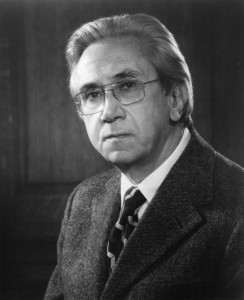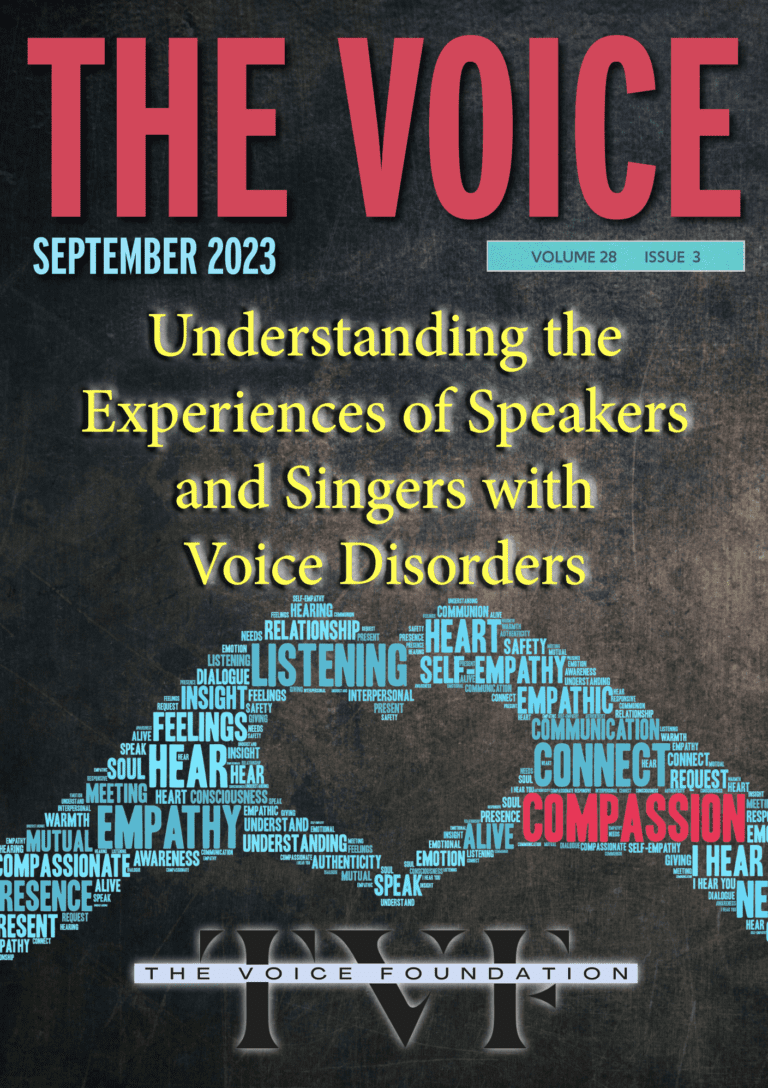Historical Gems – Video Archives
Vocal Cord Vibration - Minoru Hirano, MD













Educational Media
Educational Lectures
Documentary, Interviews
Historical Lectures
Symposium Master Classes
Journal of Voice
Vocapedia – NATS information database for information about singing and the science of voice. With articles from Journal of Voice
Historical Lectures
- Arytenoid Motion
- Basic Concepts Pertaining to Voice Disorders with G. Paul Moore
- Cancer of the Larynx
- Closed Wound Suction in Head and Neck Surgery – Hans von Leden
- Collected Works of Henry Rubin: Part I
- Collected Works of Henry Rubin: Part II
- Dynamics of the Singing Voice Dr. R. Garcia-Tapia
- Experiences in Voice Therapy: Part I Dr. Friedrich Brodnitz
- Experiences in Voice Therapy: Part II Dr. Friedrich Brodnitz
- Flexible Fibre-Optic Videolaryngoscopy…
- Glottal Incompetence Dr. Yamaguchi, Dr. Watanabe. …
- Glottic Reconstruction…
- Laryngeal Anatomy/Videostroboscopy
- Laryngostroboscopy & Phonosurgery
- The Larynx & Voice: Normal Larynx – Hans von Leden and G. Paul Moore
- The Larynx & Voice: Pathologic Larynx – Hans von Leden
- The Larynx & Voice: …Daily Stress – Hans von Leden
- The Larynx Once Over Lightly
- Larynx Print: Looking Into the Voice – Dr. Jean Abitbol
- Methods & Controls used in Laryngeal EMG Research
- Microsurgery of the Larynx
- Muscular Tension Dysphonia
- A Panel on the Human Voice with Anna Moffo, Beverly Johnson, Douglas Fairbanks, Jr., Dr. Gould
- Performers and Voice Fatigue
- Phonosurgery on Singers
- Phonosurgery Lecture #1…Nobuhiko Issiki, MD
- Phonosurgery Lecture #2…
- The Regulatory Mechanism of the Voice in Singing, M. Hirano, MD
- Speaking & Singing On Stage…Moderator Ron Scherer, Renee Ruth, singer, Tony Church, actor
- Straight from the Larynx
- Strobo-fiberoptic Video Recording…
- Surgery of the Voice – Robert Thayer Sataloff, M.D., D.M.A.
- Therapy for Singers: Part I with Oren Brown
- Therapy for Singers: Part II with Oren Brown
- Thyroplasty & Spasmodic Dysphonia Surgery
- Thyroplasty Dissection Techniques
- The Value of Laryngostroboscopy in the Management of Voice Disorders…Murray M. Morrison, MD
- Video Highlights from the Voice Clinic
- Vocal Cord Vibration with M. Hirano, MD
- Vocal Misuse & Abuse
- Vocal Waves
- The Voice of the Impersonator
- Voice Therapy for Contact Granuloma with Carole Bloch, M.A.
Hans von Leden Library
Closed Wound Suction in Head and Neck Surgery
ARYTENOID MOTION – James Letson, Jr., M.D., Renny H. Tatchell, Ph.D., Steve Zlotolow, Ph.D., and Greg de Lauro, M.A.
This videotape makes a significant contribution to the understanding of the complex movements of the arytenoid cartilages, and is a timely complement to chapter 6 of Professional Voice: The Science and Art of Clinical Care, Third Edition.Color and Sound (1997), approximately 22 minutes
______________________________________
BASIC CONCEPTS PERTAINING TO VOICE DISORDERS – G. Paul Moore, Ph.D.
This lecture is illustrated with slides and laryngoscopic images in ultra-slow motion and regular speed. The images are of normal and abnormal adult female larynges which depict lesions common to vocal abuse (nodules, hematoma, contact ulcer). There is no audio superimposed on the laryngeal images.
Color and Sound (1984), approx. 59 minutes
________________________________________________________
CANCER OF THE LARYNX – Renny H. Tatchell, Ph.D., CCC-SLP, James Letson, Jr., M.D., Stephen Zlotolow, Ph.D.
This 9 minute educational videotape provides a review of laryngeal structures, as well as abnormal conditions. Stroboscopic examples of Reinke’s edema, leukoplakia, and cancer are presented, along with brief discussions of causative factors and treatment approaches. This tape is best suited as an introduction to this subject for speech-language pathology students, singers, actors, educators, and voice patients.
Color and Sound (2004) Approximately 9 minutes
________________________________________________________
DYNAMICS OF THE SINGING VOICE – Rafael García-Tapia, M.D.
Educational presentation of views primarily of a normal female larynx during singing, and also a view of a countertenor. Illustrates the phases of the vibratory cycle and the functions of the larynx and pharynx during singing as well as the concept of “registers” as defined by changes in laryngeal and pharyngeal position during singing through a wide range of pitches.
Color and sound (1987), approximately 20 minutes
________________________________________________
EXPERIENCES IN VOICE THERAPY, Parts I and II – Friedrich S. Brodnitz, M.D.
Outlines voice therapy background and theory, examination of the patient, use of the voice in different occupations, psychologicial considerations, and technical problems.
Color and sound (1983), approximately 50 minutes (each tape)
_________________________________________
FLEXIBLE FIBRE-OPTIC VIDEOLARYNGOSCOPY IN OFFICE PRACTICE – Robert J. Feder, M.D. and Alfred Lavorato, Ph.D.
An excellently photographed, detailed, technical discussion of flexible fiberoptic videolaryngoscopy equipment, office peripherals and examination techniques followed by a series of case studies of male and female patients. Pathologies shown: velopalatine insufficiency, vallecular cyst, congenital web, vocal fold paralysis (apparent and actual), abusive changes of vocal folds (submucosal hemorrhage, nodules, granuloma), carcinoma, polyps and plypoid degeneration, and vocal tract changes.
________________________________________________________
GLOTTAL INCOMPETENCE: A CORRECTIVE PUSHING EXERCISE PROGRAM – Hiroya Yamaguchi, M.D. and Yoko Watanabe, Ph.D.
The pushing exercise program is discussed for patients with vocal fold imcompetence due to unilateral vocal fold paralysis, sulcus, or vocal fold bowing. The patient performs exercises to facilitate synchronization of the pushing movement with adduction of the vocal folds. Relaxation exercises are also demonstrated. The electroglottography results are shown after each exercise.
Color and Sound (1992), approximately 14 minutes
__________________________________________________
GLOTTIC RECONSTRUCTION FOLLOWING VERTICAL PARTIAL LARYNGECTOMY AND VIBRATION AT THE NEW GLOTTIS – Minoru Hirano, M.D.
For the technological audience, this tape shows Dr. Hirano’s surgical technique for a vertical partial laryngectomy and the reconstruction of a new glottis. This tape is particularly interesting for its slow-motion demonstrations showing the vibratory movements of the reconstructed vocal fold. Several histological slides also illustrate the mucosal bulge.
Color and sound (1976), approximately 14 minutes
![]() LARYNX PRINT: LOOKING INTO THE VOICE – Jean Abitbol, M.D.
LARYNX PRINT: LOOKING INTO THE VOICE – Jean Abitbol, M.D.
Translated from French into English, a short introduction gives a history of laryngology and the anatomy and function of the phonatory structures. The non-scientific viewer will enjoy the music and the sequences of a variety of larynges involved in many normal and abnormal speaking and singing samples. The scientific observer will additionally enjoy the translations from French medical terminology into English.
Color and Sound (1983), approximately 30 minutes
________________________________________________________
LARYNGEAL ANATOMY / LARYNGEAL VIDEOSTROBOSCOPY – William Paul Biggers, M.D., F.A.C.S.
This videotape presentation is designed to assist the student in seeing the living anatomy of the larynx during phonation and strobovideolaryngoscopic evaluation. The views are of non-anesthetized male and female patients and are produced using a rigid, fiberoptically illuminated endoscope and a CCD microcolor video camera. A description of normal anatomy and abnormal anatomy with various benign lesions accompanies each laryngoscopic presentation which includes the patient’s voice in the background.
Color and Sound (1991), approximately 28 minutes
_______________________________________________
LARYNGOSTROBOSCOPY AND PHONOSURGERY – Guy Cornut, M.D., Marc Bouchayer, M.D. and Hans Hartmann
The authors of this film – a phoniatrician and two surgeons – discuss experiences via seven examples of laryngeal pathology which represent the main indications for phonosurgery: nodules, serous pseudocyst, polyp, mucous retention cyst, epidermoid cyst, Reinke’s edema, and Teflon injection for recurrent vocal fold paralysis.
Color and Sound (1986), approximately 24 minutes. Available in French.
___________________________________________
THE LARYNX ONCE OVER LIGHTLY – Van L. Lawrence, M.D.
This is a revised edition of “The Laryngeal Image During Phonation” for the non-technical audience. A short history of the laryngeal examination describes the flexible fiberoptic laryngoscope and provides a diagrammatic anatomical description of the laryngeal structures. Dr. Lawrence does a self-examination with the laryngoscope and describes the upper phayrngeal and laryngeal structures. Descriptions and laryngoscopic views of normal and abnormal male and female larynges are presented showing the changes in structure during phonation and singing.
Color and Sound (1983), approximately 25 minutes
___________________________________________
METHODS AND CONTROLS USED IN LARYNGEAL EMG RESEARCH – Thomas Shipp, Ph.D.
Techniques are demonstrated for obtaining valid and reliable electromyographic data from relatively inaccessible intrinsic laryngeal muscles in conscious subjects. Intratracheal catheter placement is shown, and information on drug administration and physiological calibration are described in the narrative.
Color and sound (1982), approximately 16 minutes
_______________________________________
MUSCULAR TENSION DYSPHONIA – Linda A. Rammage, M.Sc., Murray D. Morrison, M.D. and Hamish Nichol, M.D.
A professional tutorial designed to assist speech pathologists and laryngologists in the diagnosis, evaluation and treatment of individuals with voice disorders characterized by generalized (muscular) hypertonicity in the vocal tract. The theoretical physiological basis for the psychosomatic syndrome of muscular tension dysphonia is presented along with results of research and clinical studies in support of these theories.
_________________________________________________
A PANEL ON THE HUMAN VOICE – Moderated by Anna Moffo Sarnoff, International Opera Singer
A discussion of the demands put on the voice by various professions and avocations, dissemination of information about the voice, the function of the voice in everyday life, current methods of voice evaluation, and good vocal hygiene. This presentation for the general audience involves a diverse panel: actor Douglas Fairbanks Jr.; noted laryngologist, Wilbur James Gould, M.D.; voice coach, Beverly Johnson; singer and creator of advertising materials, Linda November; television producer and commentator, Marie Torre.
Color and Sound (1981), approximately 26 minutes
________________________________________________________
PERFORMERS AND VOICE FATIGUE – Jean Abitbol, M.D.
A didactic physiological presentation on the vocal mechanism as it relates to medical problems of chronic vocal fatigue, especially as it affects performers. Diagrams, x-ray photography, laryngoscopic and stroboscopic images of males and females speaking and singing, and histological slide presentations augment the presentation.
Color and Sound (1986), approximately 25 minutes
_____________________________________________________
PHONOSURGERY ON SINGERS – Guy Cornut, M.D. and Marc Bouchayer, M.D.
Phonosurgery for singers poses delicate problems concerning surgical indications, surgical techniques and post operative care. This video illustrates four examples of the most common pathologies and summarizes the therapeutic orientation of the authors before, during and after the operation. Illustrations are done with larygoscopic images under normal and stroboscopic light.
Color and Sound (1988), approximately 18 minutes
_____________________________________________________
THE REGULATORY MECHANISM OF THE VOICE IN SINGING – Minoru Hirano, M.D.
Dr. Hirano’s tape features high speed photography of vocal fold vibration and the electromyography (EMG) of various laryngeal muscles. Also, it shows the EMG activity of laryngeal muscles during register changes.
Color and sound (1980), approximately 25 minutes
________________________________________
SPEAKING AND SINGING ON STAGE: A PERFORMANCE DEMONSTRATION – Ronald C. Scherer, Ph.D.
This videotape ushers in a relatively untouched research field of the marriage of broad artistic intents, physiological requirements of the vocal performer, and hall acoustics. The topics that are demonstrated, discussed, and given acoustic analyses include adequate soft vocal performance, consequences of using too low of a pitch in acting, singing off pitch, the importance and reasons for pitch inflection in acting, the importance and enhancements of seeing the front and face of the performer, overcoming problems of the highly reverberant hall, and vowel modification with pitch change to preserve vocal quality. Other topics discussed include the definitions of audibility, intelligibility, and interpretation from the performers’ point of view, pitch matching problems, insights into adequate nonverbal performance, “cheating out”, trading intelligibility for vocal quality, resonance for different vocal styles, and safe shouting.
Color and Sound (1996), approximately 80 minutes.
Copyright 1996 by the Acoustical Society of America.
________________________________________________________
STRAIGHT FROM THE LARYNX – Jean Abitbol, M.D.
An excellent video for the non-technical audience, this beautifully photographed series of normal and abnormal, male and female laryngeal images, also contains a brief depiction of a laser surgery procedure and electroglottography.
Color and Sound (1983), approximately 25 minutes
____________________________________________
STROBO-FIBEROPTIC VIDEO RECORDING OF VOCAL FOLD VIBRATION – Minoru Hirano, M.D.
Describes the components of the strobo-fiberscopic system and how it is utilized. Examples of fiberoptic and strobo-fiberoptic images of adult and child, normal and abnormal larynges are presented. A brief summation of the advantages and disadvantages of strobo-fiberoptic versus strobo-telescopic imaging is also presented.
Color and Sound (1984), approximately 11 minutes
________________________________________________________
SURGERY OF THE VOICE – Robert Thayer Sataloff, M.D., D.M.A.
In this didactic lecture, Dr. Sataloff presents an in-depth look at the advancement of phonosurgery from the days of vocal fold “stripping” to the present age of delicate microsurgery. He describes the anatomy and physiology of the vocal folds; the prerequisites for determining potential surgical candidates; techniques of vocal fold surgery; the importance of excellent anesthesiology, surgical instruments and laryngoscopes; the advantages/ disadvantages of the use of the carbon dioxide laser; vocal fold lesions which require surgery; and a comparison of microflap versus miniflap surgery.
Dr. Sataloff continues with a discussion of surgical techniques for dissection of vocal fold masses (cysts), Reinke’s edema, excision of papillomas, surgery for carcinoma, excision of vocal fold webs, treating vocal fold hemorrhage, treating vocal fold scar, treating sulcus vocalis, and treating “bowed vocal folds.
Color and Sound (1993), approximately 1 hour
________________________________________________________
THERAPY FOR SINGERS, PART I and II – Oren Brown
Part I: Lecture and Demonstration
Describes the range of the author’s patients with voice disorders and some of the symptomatology they have presented. Points out patterns of voice abuse and aspects of healthy voice production. A demonstration of a singing voice therapy session is presented in which the patient relates a history of past voice use and symtomatology of the vocal problems.
Part II: Therapy Sessions with a Male and a Female Patient
The patient describes his or her vocal sympomatology and gives a brief singing and medical history. Exercises utilizing humming and scale patterns on different vowels are demonstrated. The patient describes his or her responses to the exercises after four weeks of treatment.
Color and Sound (1983), approximately 50 minutes (each tape)
________________________________________________________
THYROPLASTY AND SPASTIC DYSPHONIA SURGERY – Nobuhiko Isshiki, M.D.
Illustrates the principles and technical details of phonosurgery, including thyroplasty for reducing a glottal chink; surgical techniques for arytenoid reduction; surgery to correct bilateral vocal fold paralysis; thyroplasty to raise and lower vocal pitch; and thyroplasty for reducing spastic dysphonia.
Color and Sound (1981), approximately 28 minutes
________________________________________________________
![]() THE LARYNX AND VOICE: THE FUNCTION OF THE NORMAL LARYNX – Hans von Leden, M.D. and G. Paul Moore, M.D.
THE LARYNX AND VOICE: THE FUNCTION OF THE NORMAL LARYNX – Hans von Leden, M.D. and G. Paul Moore, M.D.
Classic, historical video demonstrating the anatomy and physiology of the voice and the mechanics of the vocal folds.
Color and Sound (1957), approximately 21 minutes
________________________________________________________
![]() THE LARYNX AND VOICE: THE FUNCTION OF THE PATHOLOGIC LARYNX – Hans von Leden, M.D. and G. Paul Moore, M.D.
THE LARYNX AND VOICE: THE FUNCTION OF THE PATHOLOGIC LARYNX – Hans von Leden, M.D. and G. Paul Moore, M.D.
A staged, vintage visit to the laryngologist, complete with high-speed laryngeal videos of the pathologic larynx.
Color and Sound (1957), approximately 24 minutes
________________________________________________________
![]() THE LARYNX AND VOICE: PHYSIOLOGY OF THE LARYNX UNDER DAILY STRESS – Hans von Leden, M.D. and G. Paul Moore, M.D.
THE LARYNX AND VOICE: PHYSIOLOGY OF THE LARYNX UNDER DAILY STRESS – Hans von Leden, M.D. and G. Paul Moore, M.D.
Historical high-speed laryngeal videos of the vocal folds during singing, laughing, coughing, talking, and vocal fry.
________________________________________________________
MICROSURGERY OF THE LARYNX – Minoru Hirano, M.D. This tape shows Dr. Hirano’s microlaryngeal surgical techniques for several procedures: removal of a nodule, cyst, and a polyp; laser excision of granuloma, a ventricular cyst, and epithelial dysplasia; laser cordectomy of glottic carcinoma; and laser correction of a subglottal stenosis using an endolaryngeal approach.
Color and Sound (1982), approximately 16 minutes
________________________________________________________
![]() PHONOSURGERY LECTURE NUMBER 1: THYROPLASTY I and III (and ARYTENOID ADDUCTION) – Nobuhiko Isshiki, M.D.
PHONOSURGERY LECTURE NUMBER 1: THYROPLASTY I and III (and ARYTENOID ADDUCTION) – Nobuhiko Isshiki, M.D.
The four types of thyroplasty procedures are classified and the advantages of laryngeal framework surgery are given. An in-depth discussion of the thyroplasty I (vocal fold medialization) procedure used to correct imperfect glottic closure is given. A description is given of a combined operation of thyroplasty type I and thyroplasty type III used to correct vocal fold atrophy and sulcus. Videotaped highlights of the thyroplasty procedure are presented along with pre- and postoperative stroboscopic images of the patients. The arytenoid adduction procedure is discussed as is the combining of arytenoid adduction with thyroplasty type I to correct a large glottal chink. The vidoetape concludes with a short question-and-answer session.
Color and Sound (1993), aprroximately 93 minutes
________________________________________________________
![]() PHONOSURGERY LECTURE NUMBER 2: MISCELLANEOUS PROBLEMS AND RESEARCH POTENTIALS – Nobuhiko Isshiki, M.D.
PHONOSURGERY LECTURE NUMBER 2: MISCELLANEOUS PROBLEMS AND RESEARCH POTENTIALS – Nobuhiko Isshiki, M.D.
The effectiveness of the Silastic implants used in thyroplasty procedures is discussed. The focus is on pitch problems and how dysphonia develops. Highlights include the following surgical procedures: lowering vocal pitch, cricothyroid approximation, combined thyroplasty to correct an unusual functional-related dysphonia, thyroplasty type I for correction of spastic dysphonia, laryngeal web removal and mucosal transplantation. Concludes with a discussion of the acoustical analysis of the voice and applications for determining the ease of phonation, along with the importance of animal experimentation.
Color and Sound (1993), approximately 91 minutes
________________________________________________________
THE VOICE OF THE IMPERSONATOR – Robert J. Feder, M.D., F.A.C.S.
Impersonators Mel Blanc and Rich Little and ventriloquist Willie Tyler demonstrate their various characterizations and their normal voices. The patterns of vocal fold motion and the associated dramatic changes that occur in the supraglottic vocal tract are observed using flexible fiberoptic laryngoscopy.
________________________________________________________
![]() THE VALUE OF LARYNGOSTROBOSCOPY IN THE MANAGEMENT OF VOICE DISORDERS – Murray D. Morrison, M.D.
THE VALUE OF LARYNGOSTROBOSCOPY IN THE MANAGEMENT OF VOICE DISORDERS – Murray D. Morrison, M.D.
Gives examples of male and female laryngeal images under normal and stroboscopic light. Pathologies illustrated include nodules, edema, fibrosis, polypoid thickening, contact granuloma, diplophonia, vocal fold scarring secondary to vocal fold “stripping,” vocal fold carcinoma, and glottic web.
Color and Sound (1983), approximately 13 minutes
________________________________________________________
![]() VOCAL CORD VIBRATION – Minoru Hirano, M.D.
VOCAL CORD VIBRATION – Minoru Hirano, M.D.
Vocal fold anatomy is illustrated using histological slides and schematic drawings. The mode of vibration is demonstrated using simplified schematic drawings. High-speed photography illustrates the vocal fold vibration of several male and female subjects with normal and abnormal larynges, then the vibration is simulated in schematic drawings.
________________________________________________________
VOCAL WAVES – Jean Abitbol, M.D.
________________________________________________________
![]() VOICE THERAPY FOR CONTACT GRANULOMA – Carole Bloch, M.A.
VOICE THERAPY FOR CONTACT GRANULOMA – Carole Bloch, M.A.
A group of six professional men who are currently undergoing treatment for contact granuloma discuss their experiences with surgical, medical, and therapeutic treatment regimens. This video illustrates the value of voice therapy as a primary mode of treatment for this disorder
__________________________________
VIDEO HIGHLIGHTS FROM THE VOICE CLINIC – Murray D. Morrison, M.D.
A collection of laryngoscopic images (normal and abnormal, male and female larynges during speech and singing) under normal and stroboscopic light. Effects of voice abuse and increased laryngeal tension, hiatal hernia, smoking, drinking, and other laryngeal irritants are illustrated.
Color and Sound (1983), approximately 29 minutes
_______________________________________
VOCAL MISUSE AND ABUSE – James Letson, Jr., M.D., Renny H. Tatchell, Ph.D., Steve Zlotolow, Ph.D.
Presents various lesions which are secondary to phonotrauma.
Color and Sound (2001), approximately 10 minutes


